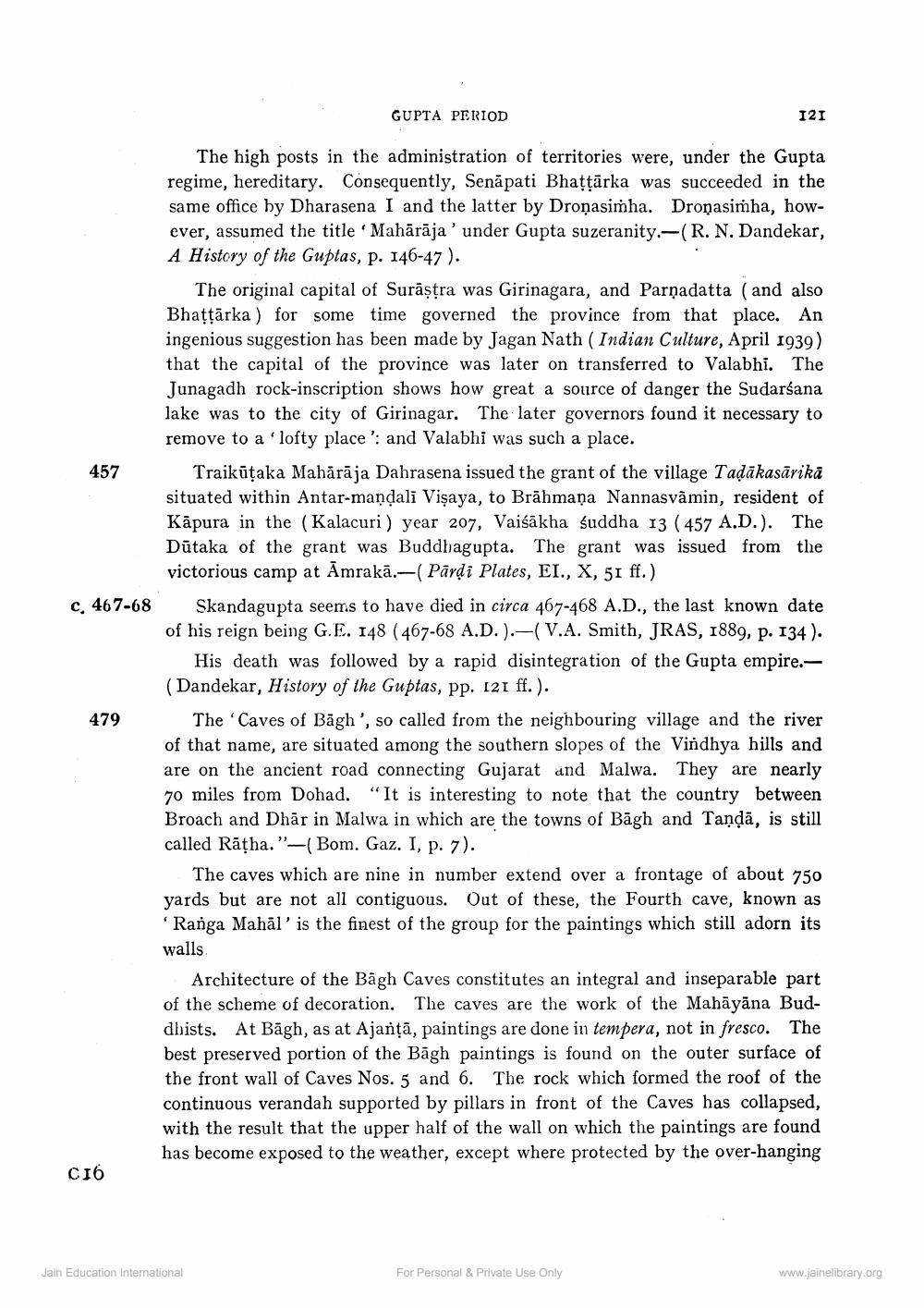________________
GUPTA PERIOD
121
457
The high posts in the administration of territories were, under the Gupta regime, hereditary. Consequently, Senāpati Bhattārka was succeeded in the same office by Dharasena I and the latter by Droņasimha. Droņasimha, however, assumed the title ‘Mahārāja 'under Gupta suzeranity.-(R. N. Dandekar, A History of the Guptas, p. 146-47 ).
The original capital of Surāṣtra was Girinagara, and Parṇadatta (and also Bhațțārka) for some time governed the province from that place. An ingenious suggestion has been made by Jagan Nath (Indian Culture, April 1939) that the capital of the province was later on transferred to Valabhi. The Junagadh rock-inscription shows how great a source of danger the Sudarsana lake was to the city of Girinagar. The later governors found it necessary to remove to a lofty place': and Valabhi was such a place.
Traikūtaka Mahārāja Dahrasena issued the grant of the village Tadākasārikā situated within Antar-mandali Vişaya, to Brāhmaṇa Nannasvamin, resident of Kāpura in the (Kalacuri) year 207, Vaišākha suddha 13 ( 457 A.D.). The Dūtaka of the grant was Buddhagupta. The grant was issued from the
victorious camp at Āmrakā.-( Pārdi Plates, EI., X, 51 ff.) c. 467-68 Skandagupta seems to have died in circa 467-468 A.D., the last known date
of his reign being G.E. 148 (467-68 A.D.).—(V.A. Smith, JRAS, 1889, p. 134).
His death was followed by a rapid disintegration of the Gupta empire.
(Dandekar, History of the Guptas, pp. 121 ff.). 479 The Caves of Bāgh', so called from the neighbouring village and the river
of that name, are situated among the southern slopes of the Vindhya hills and are on the ancient road connecting Gujarat and Malwa. They are nearly 70 miles from Dohad. "It is interesting to note that the country between Broach and Dhār in Malwa in which are the towns of Bāgh and Tandā, is still called Rāțha."-(Bom. Gaz. I, p. 7).
The caves which are nine in number extend over a frontage of about 750 yards but are not all contiguous. Out of these, the Fourth cave, known as
Ranga Mahāl' is the finest of the group for the paintings which still adorn its walls
Architecture of the Bāgh Caves constitutes an integral and inseparable part of the scheme of decoration. The caves are the work of the Mahāyāna Buddhists. At Bagh, as at Ajanțā, paintings are done in tempera, not in fresco. The best preserved portion of the Bāgh paintings is found on the outer surface of the front wall of Caves Nos. 5 and 6. The rock which formed the roof of the continuous verandah supported by pillars in front of the Caves has collapsed, with the result that the upper half of the wall on which the paintings are found
has become exposed to the weather, except where protected by the over-hanging CI6
Jain Education Intemational
For Personal & Private Use Only
www.jainelibrary.org




